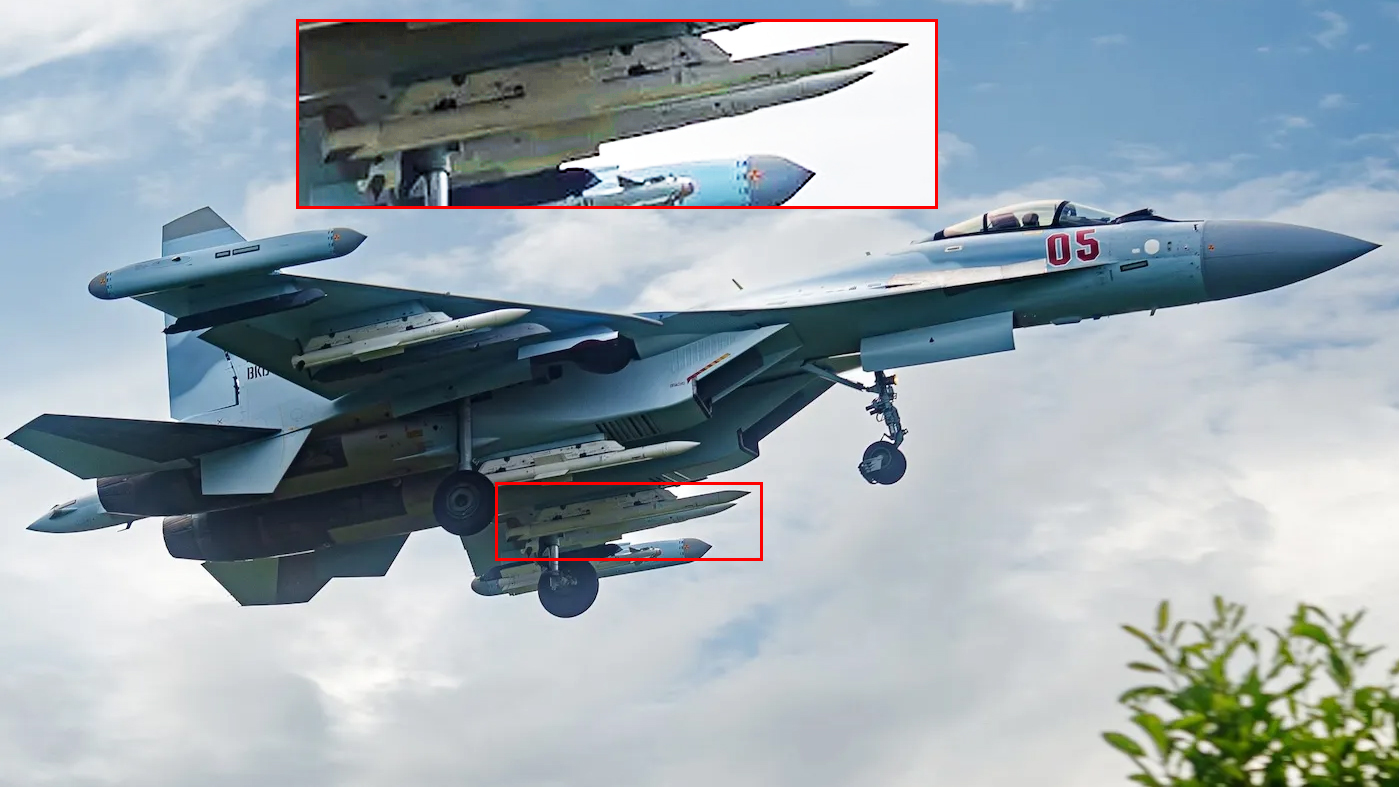The TWZ Newsletter
Weekly insights and analysis on the latest developments in military technology, strategy, and foreign policy.
Russia appears to be using a new type of air-to-air missile in its war in Ukraine. Evidence is mounting that the R-77M — a significantly upgraded version of the R-77 beyond-visual-range missile known to NATO as the AA-12 Adder — is not only operational but being employed in combat. The arrival of the new weapon presents another major challenge for the Ukrainian Air Force, as well as other potential adversaries.
A photo that recently appeared on social media shows a Russian Aerospace Forces (VKS) Su-35S Flanker-E multirole fighter carrying two examples of the R-77M on the pylons under the engine intake ducts. These can be immediately compared with the standard R-77-1s that are carried on the center hardpoints below the wings. The fighter is also armed with a single infrared-guided R-73/74 (AA-11 Archer) series dogfight missile, under the port wing, and has electronic countermeasures pods on the wingtip stations.
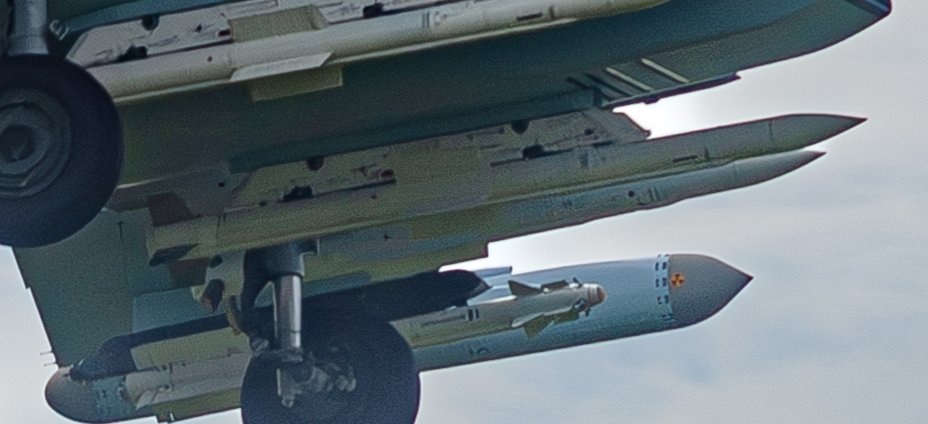 A close-up of the R-77M carried by the Su-35S, with a standard R-77-1 and an R-73/74 behind it. via X
A close-up of the R-77M carried by the Su-35S, with a standard R-77-1 and an R-73/74 behind it. via X
Visually, the R-77M differs from the R-77 in having conventional cropped cruciform tailfins, instead of the original ‘potato-masher’ lattice-type control surfaces. Meanwhile, the cruciform control surfaces on the missile’s body are noticeably shorter in length on the R-77M.
More significantly, the R-77M should bring some major improvements over the R-77, helping the missile keep pace, at least to some degree, with developments in China and the United States, for example.
While the date and location of the Su-35S photo are unclear, and may show pre-service trials or evaluation, there is more concrete evidence of operational (combat) use of the R-77M, in the form of a photo showing apparent wreckage of the weapon recovered in Ukraine. The parts of the expended missile clearly reveal one of the cropped cruciform tailfins. Although it remains possible that it is a different missile of some kind, it certainly conforms strongly to the appearance of the R-77M. Its appearance in combat would provide another advantage to the VKS, which already operates air-to-air missiles that outrange Ukrainian equivalents.
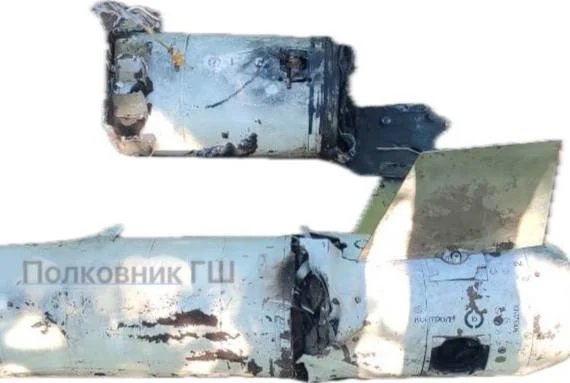 Apparent wreckage of an R-77M missile. via Telegram/Polkovnyk GSh
Apparent wreckage of an R-77M missile. via Telegram/Polkovnyk GSh
The basic R-77 is now a fairly old weapon. Russia began developing the active-radar-guided R-77, also known as the Izdeliye 170, back in the early 1980s as a counterpart to the U.S. AIM-120 AMRAAM. However, it didn’t enter service until after the collapse of the Soviet Union, only becoming part of Russia’s arsenal in 1994.
With Russia in economic turmoil in the 1990s, only very few R-77s were completed for domestic service, with the bulk of production being for export.
By the time Russia began to receive the missile in quantity, it had been modestly improved as the R-77-1, or izdeliye 170-1, which was in service in time to support Russian operations in Syria in 2015. This weapon offers improved resistance to countermeasures, a more sensitive seeker, and limited aerodynamic refinements, with the lattice fins at the rear being retained.
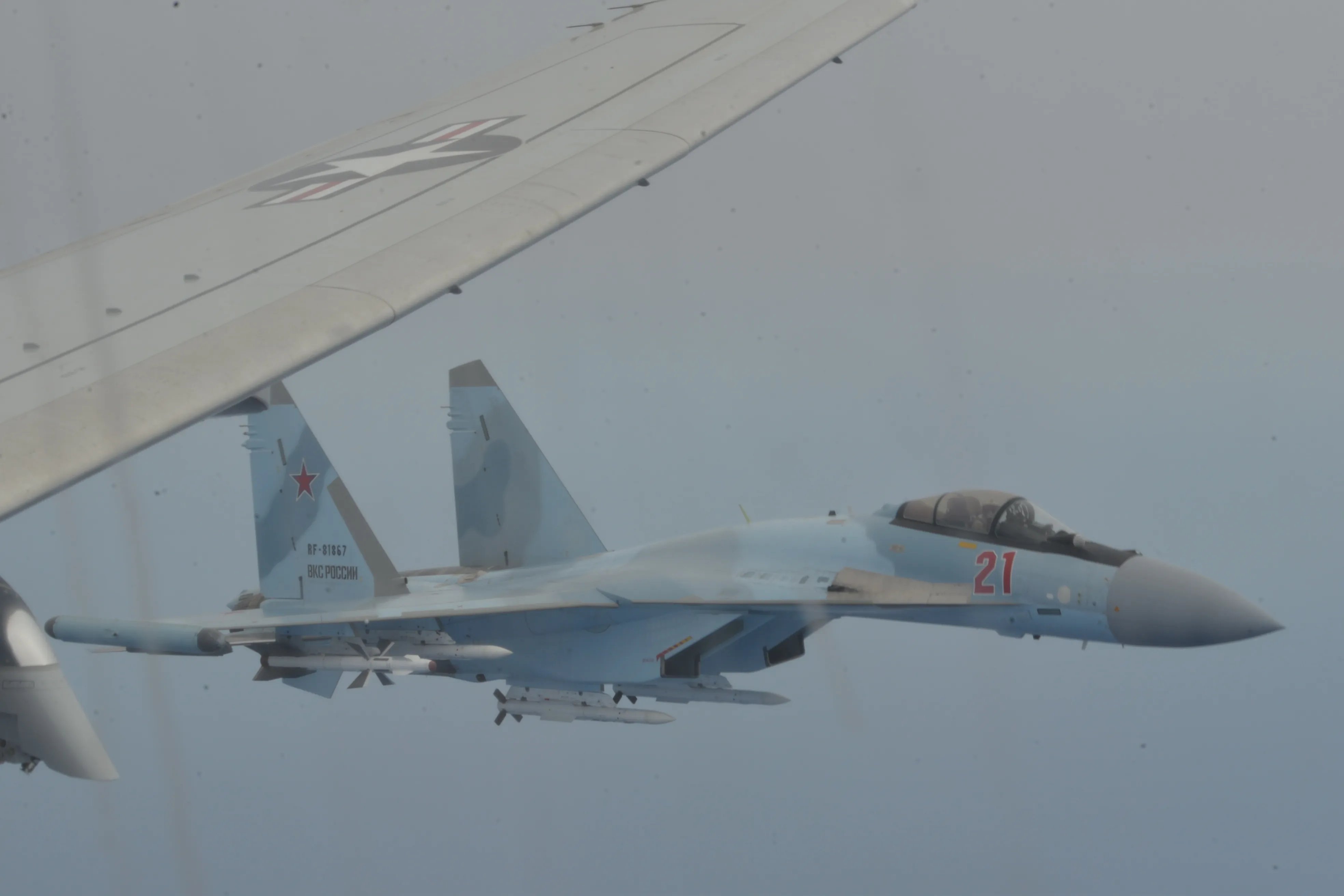 A Russian Aerospace Forces Su-35S intercepts a U.S. Navy P-8 maritime patrol aircraft. The fighter is armed with R-77-1 missiles, plus an infrared-guided R-27T furthest outboard. U.S. NAVAL FORCES EUROPE-AFRICA
A Russian Aerospace Forces Su-35S intercepts a U.S. Navy P-8 maritime patrol aircraft. The fighter is armed with R-77-1 missiles, plus an infrared-guided R-27T furthest outboard. U.S. NAVAL FORCES EUROPE-AFRICA
The R-77-1 was viewed as an interim upgrade, with the R-77M, or Izdeliye 180, intended to bring much more considerable improvements. (While in development, the new version has the designation K-77M, although on service entry this will have been amended to R-77M.)
Having conventional control fins means that the R-77M can be carried internally in the weapons bay of the Su-57 Felon. At the same time, the revised fins reduce the missile’s aerodynamic drag and radar cross-section.
Other changes include a new dual-pulse rocket motor and a further enhanced radar seeker, which is said to have a semi-active mode to supplement the active seeker; perhaps, this is intended to be used for third-party target illumination. The dual-pulse engine ensures that thrust output is maintained throughout the missile’s flight profile, allowing improved high-altitude maneuvering, extended range, and enhanced endgame performance. These enhancements provide a larger ‘no escape zone’ for the weapon’s target. Unconfirmed reports suggest that the K-77M offers double the range of the R-77; that would imply a range of up to 100 miles for the new weapon, although actual range depends on many factors. These include the target’s size, maneuvering dynamics, speed, and altitude, as well as the launching aircraft’s speed and altitude, and the flight path of the target throughout the engagement.
In the past, the missile’s manufacturer, Vympel, has claimed the R-77M is superior to the AIM-120C-7 AMRAAM and equal to subsequent AMRAAM developments — presumably, the AIM-120D. Official performance data for the AIM-120D is classified, but some put it upwards of 100 miles, while others say it is more like 75 miles.
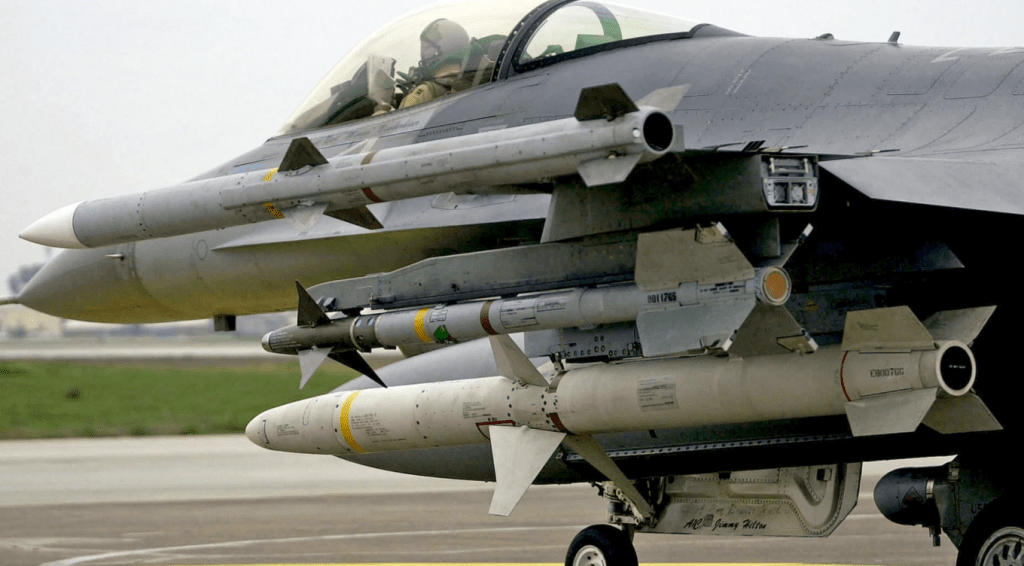 A U.S. Air Force F-16C carries an AIM-120C AMRAAM on the wingtip, with an AIM-9L/M Sidewinder on the outermost underwing pylon, and an AGM-88 HARM on the mid-wing pylon. U.S. Air Force
A U.S. Air Force F-16C carries an AIM-120C AMRAAM on the wingtip, with an AIM-9L/M Sidewinder on the outermost underwing pylon, and an AGM-88 HARM on the mid-wing pylon. U.S. Air Force
Vympel manufacturer has also claimed the R-77M is capable of engaging anti-aircraft missiles fired at the launch aircraft, even missiles approaching from the rear. These claims, as with others from Russian industry, should be treated with some caution.
In 2020, TWZ reported on the appearance of footage apparently showing one or more K-77M/R-77M missiles loaded under the wings of a Su-57. Potentially, the same jet was also carrying another advanced version of the missile, the ramjet-powered Izdeliye 180-PD, although this cannot be confirmed beyond doubt.
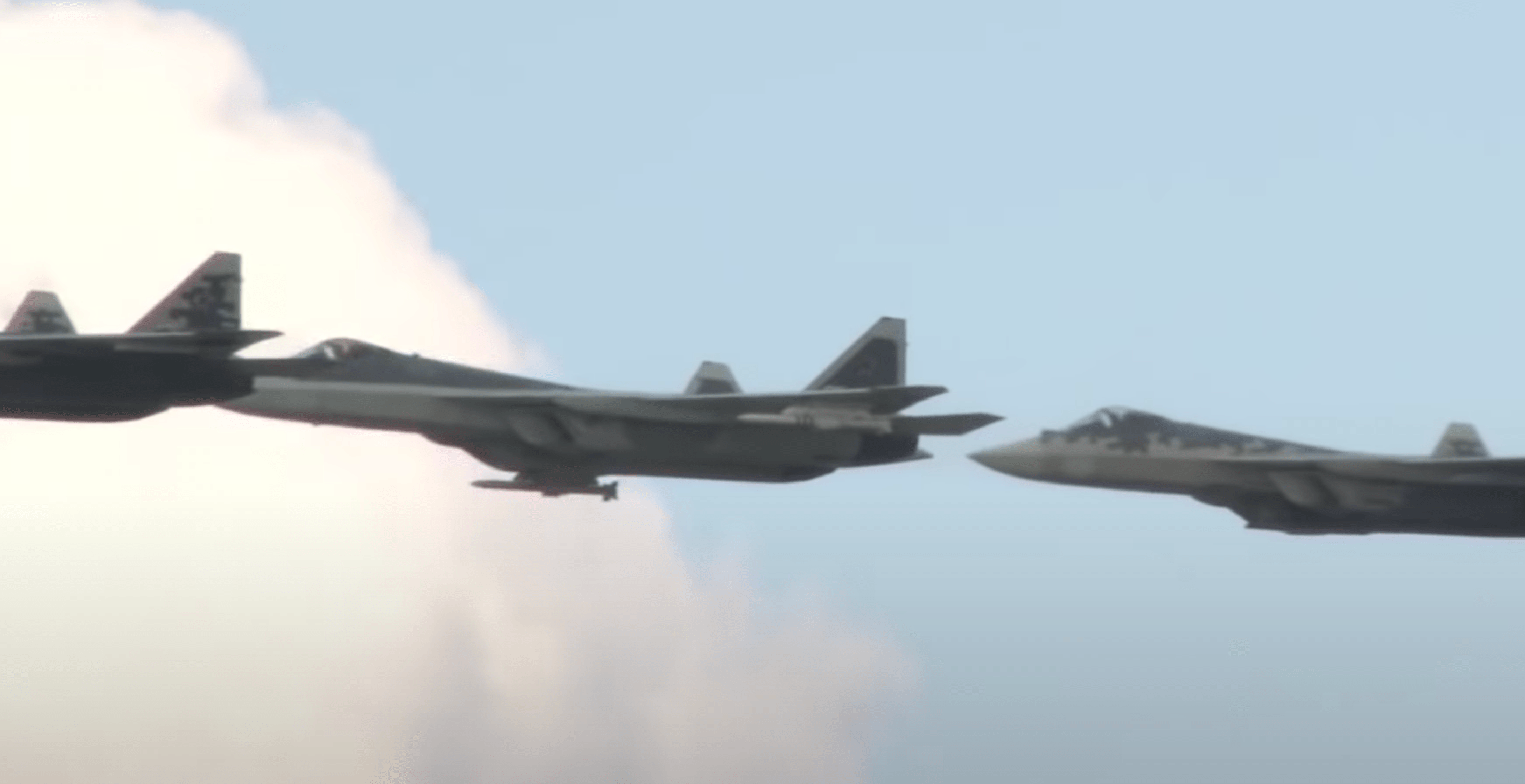 A cropped view of the second Su-57 in the formation, apparently armed with new variants of the R-77 missile. Russian Ministry of Defense screencap
A cropped view of the second Su-57 in the formation, apparently armed with new variants of the R-77 missile. Russian Ministry of Defense screencap
The Izdeliye 180-PD, which would offer even greater range than the R-77M, has been promoted as a Russian counterpart to the pan-European MBDA Meteor air-to-air missile and utilizes a combined rocket-ramjet powerplant. Reportedly developed as a private venture by Vympel, it’s unclear if the weapon has been ordered by Russia. You can read more about the specific advantages of ramjet missiles in this TWZ article.
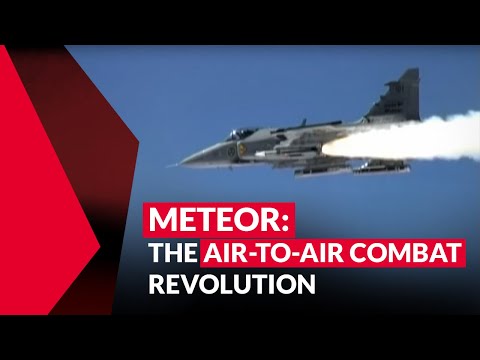
Whatever the status of the Izdeliye 180-PD, the apparent fielding of the R-77M provides a major advance in capability over the R-77-1, which was previously Russia’s standard active-radar air-to-air missile.
Douglas Barrie, senior fellow for Military Aerospace at the International Institute for Strategic Studies (IISS) think-tank, told TWZ that the R-77 (which appears to have the NATO codename AA-12c Adder) “is a key air-to-air missile program for the Russian Air Force” and “a significant upgrade” over the R-77-1.
“The weapon should offer a notable increase in range, seeker performance, and countermeasures resistance,” Barrie said. “It would be little surprise if, and it remains an if, the VKS were testing the missile in a combat environment in Ukraine.”
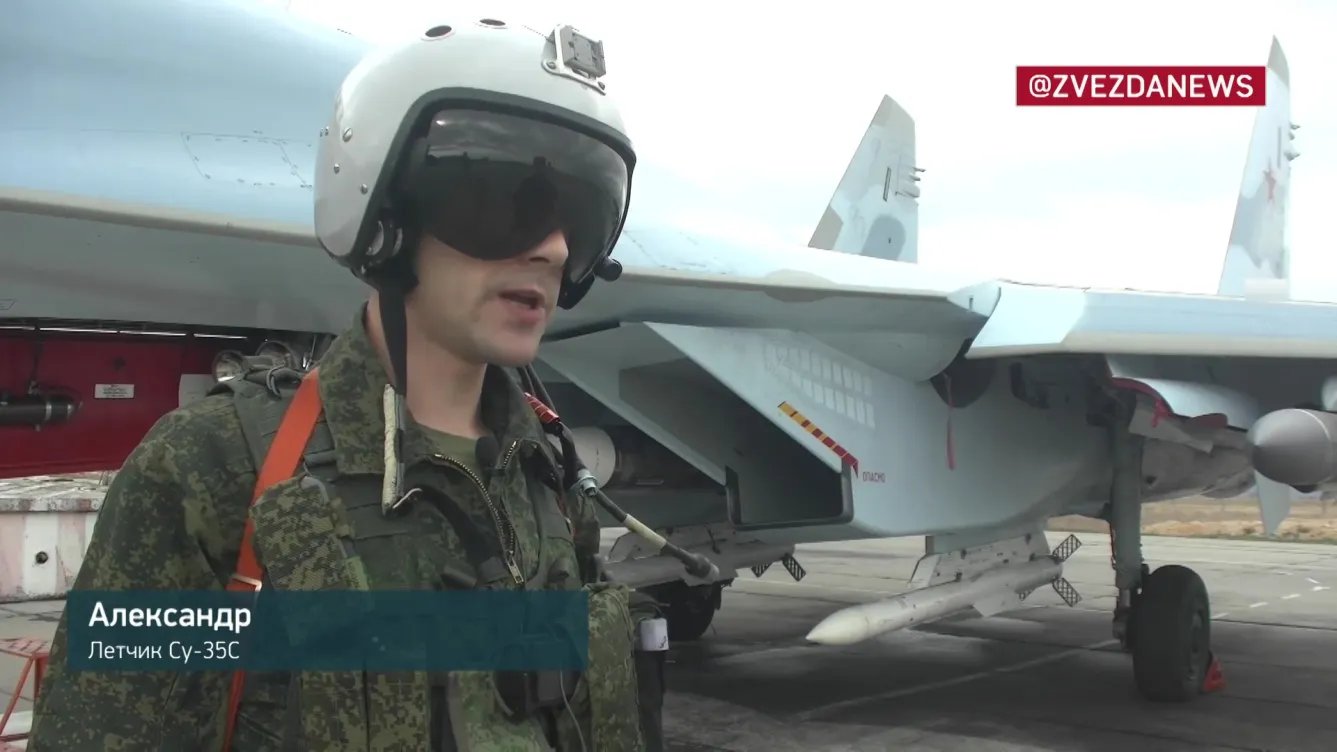 A Su-35S pilot in front of a jet armed with R-37M, R-77-1, and Kh-31P missiles, at Belbek in Crimea, from footage released in November 2022. TV Zvezda
A Su-35S pilot in front of a jet armed with R-37M, R-77-1, and Kh-31P missiles, at Belbek in Crimea, from footage released in November 2022. TV Zvezda
Long-reaching air-to-air missiles, including the R-77-1 and the ultra-long-range R-37M (AA-13 Axehead), which you can read more about here, have been a persistent thorn in the side of the Ukrainian Air Force since the start of the full-scale invasion. The longest-range air-to-air missile in Ukrainian use is the AIM-120C AMRAAM. According to data from one of its operators, the AIM-120C-5 provides a maximum range of around 46 miles. This compares with a reported range of 68 miles for the R-77-1 and 124 miles for the R-37M. The R-77M likely falls somewhere between the R-77-1 and R-37M and certainly outstrips the range of the AIM-120C in most scenarios.
Speaking to TWZ before his death in a 2023 flying accident, Ukrainian MiG-29 pilot Andrii “Juice” Pilshchykov said that the R-37M, typically fired from within Russian airspace, was “limiting our capabilities to conduct our missions. Of course, if you’re maneuvering, we are not able to provide an airstrike or something else, so the game is still very, very, very tough in the air and very, very risky. If you’re not aware of the launch of a missile, you’re dead.” Adding the R-77M to the mix only makes the situation more complex for Ukrainian aviators.
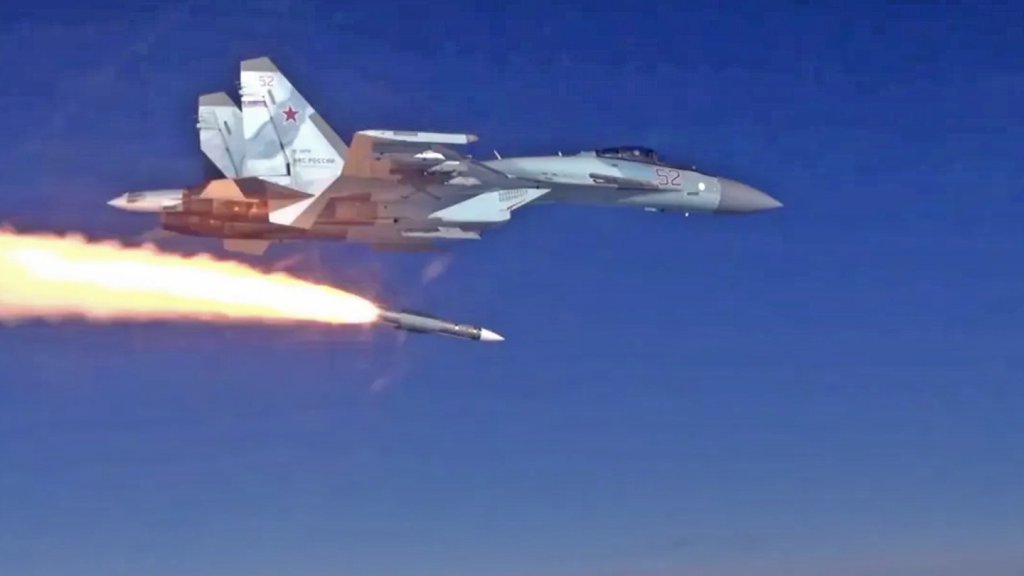 A Su-35S launches an R-37M at the Akhtubinsk test center. Russian Ministry of Defense Russian Ministry of Defense
A Su-35S launches an R-37M at the Akhtubinsk test center. Russian Ministry of Defense Russian Ministry of Defense
Nevertheless, as Barrie points out, Russian air-to-air missile development continues to lag behind that of China, notably in the case of the PL-15 medium-to-long range missile, or CH-AA-10 Abaddon, a weapon that came to prominence in the brief air war between India and Pakistan earlier this year. China has longer-range missiles in development and possibly also in service.
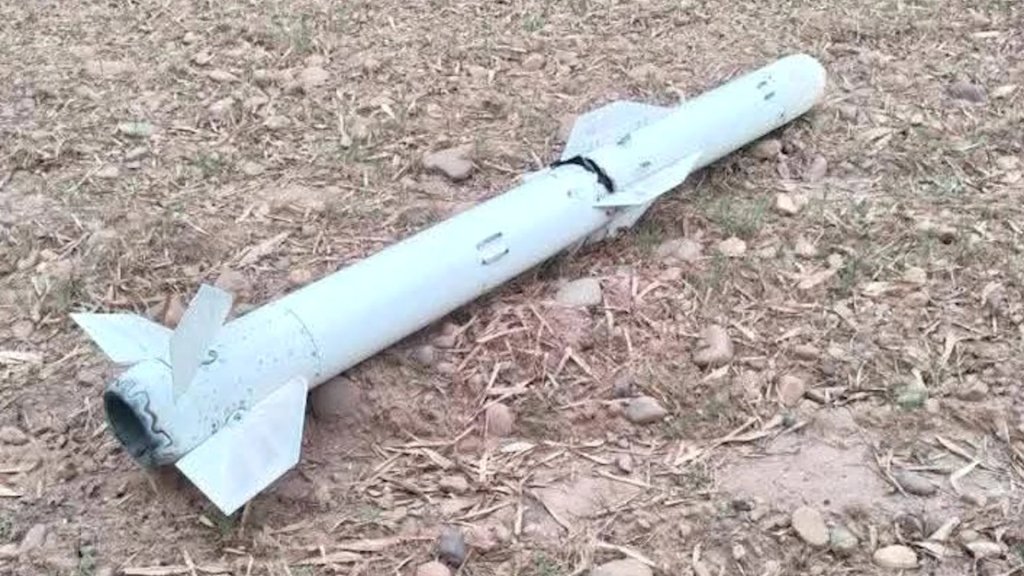 The largely intact rear section and other parts of a Chinese-made PL-15E active-radar-guided air-to-air missile that came down in India during a battle in the skies along the country’s border with Pakistan in May. via X
The largely intact rear section and other parts of a Chinese-made PL-15E active-radar-guided air-to-air missile that came down in India during a battle in the skies along the country’s border with Pakistan in May. via X
Meanwhile, the United States, driven primarily by the Chinese missile threat, is working on longer-range air-to-air missiles of its own.
Recently, the U.S. Navy has introduced, at least on a limited level, an air-launched version of the Standard Missile-6 (SM-6) under the AIM-174B designation. The range of this missile is classified but should be far in excess of that of the AIM-120D, probably at least double and perhaps even triple the range, against large targets. Meanwhile, a joint U.S. Navy and U.S. Air Force program is developing the AIM-260, a new air-to-air missile that is intended to offer far greater range than the current AMRAAMs, as well as other new and improved capabilities, but will importantly provide these in a missile with similar dimensions to the AIM-120. Other long-range U.S. air-to-air missiles are also under development.
In some areas of air-to-air missile development, the United States is seeing its qualitative advantage diminishing; in some areas, China is likely surpassing it. However, the growing evidence that the R-77M is both in service and being used in combat signals that Russia is also still working hard to field air-to-air missiles that should be able to out-range many of their Western counterparts.
Contact the author: thomas@thewarzone.com
Thomas is a defense writer and editor with over 20 years of experience covering military aerospace topics and conflicts. He’s written a number of books, edited many more, and has contributed to many of the world’s leading aviation publications. Before joining The War Zone in 2020, he was the editor of AirForces Monthly.
